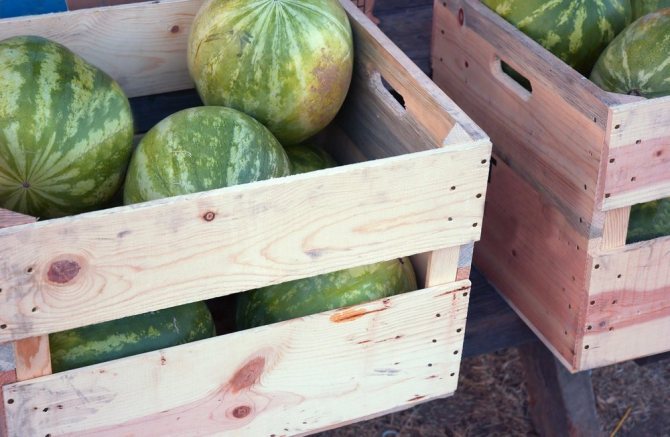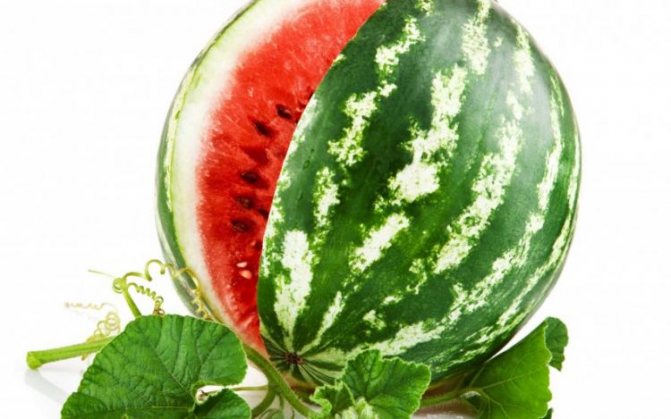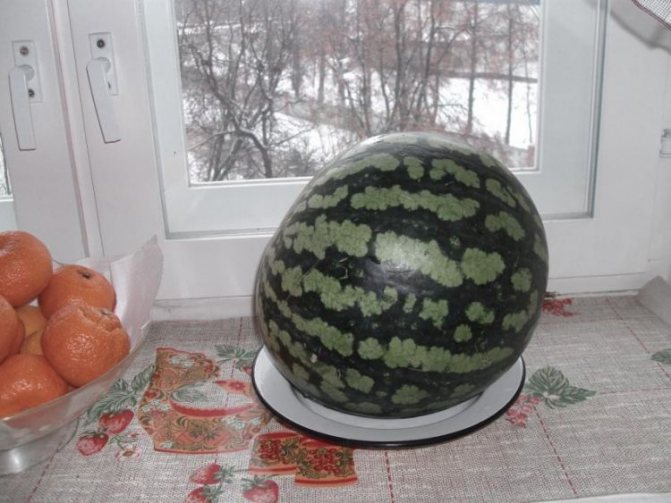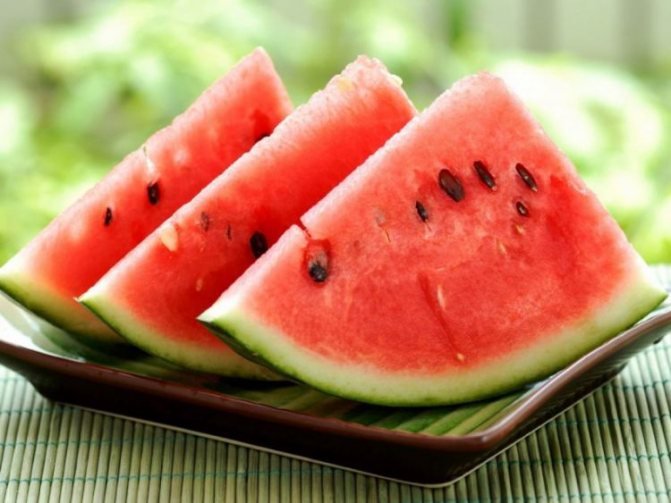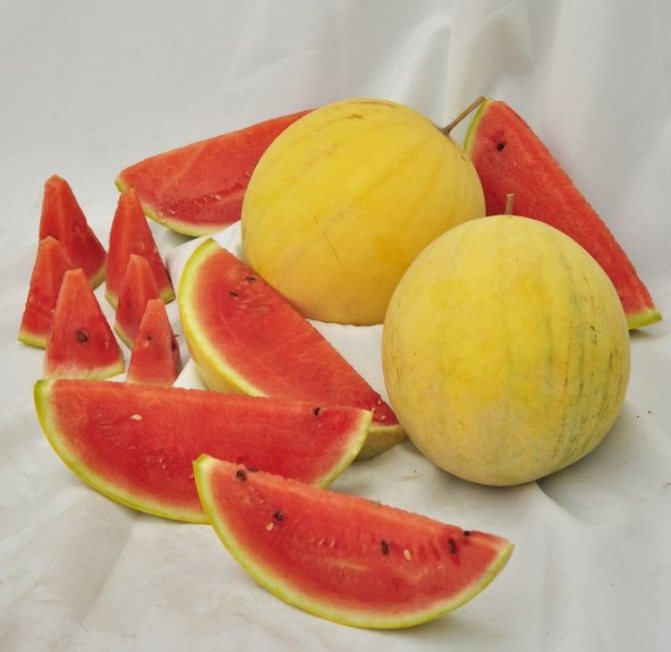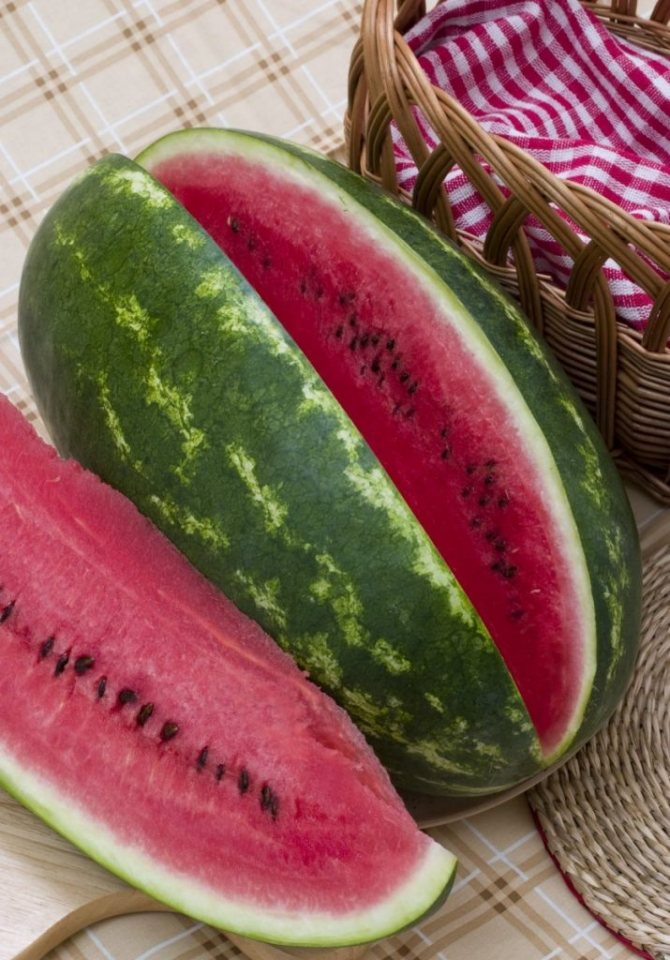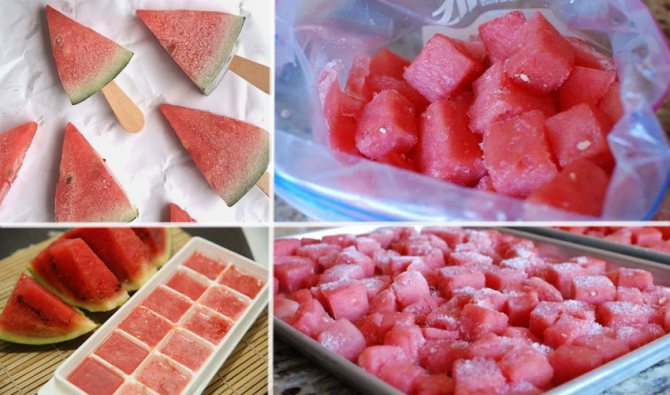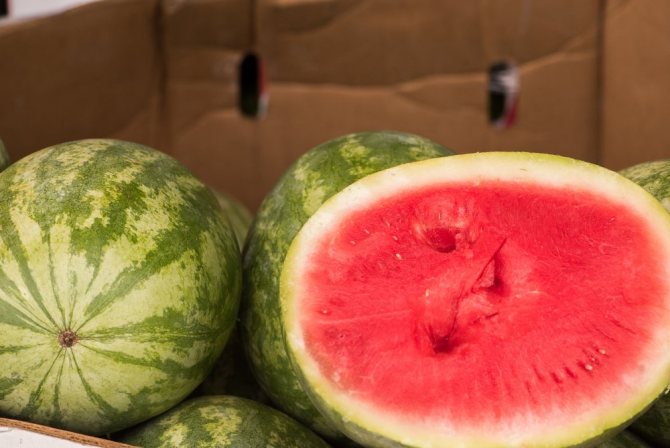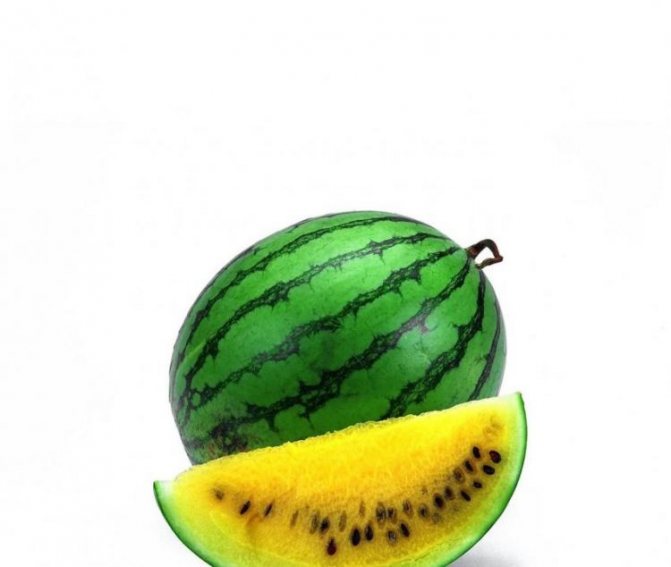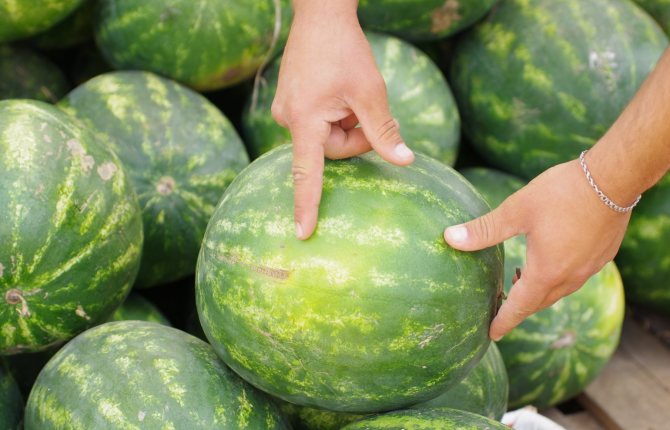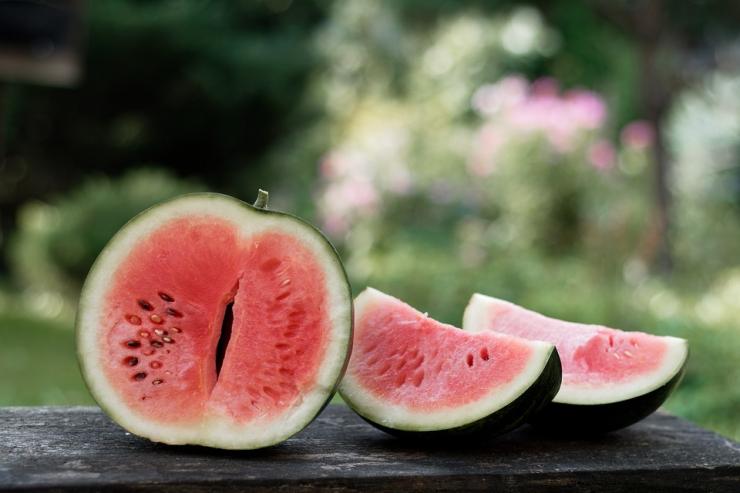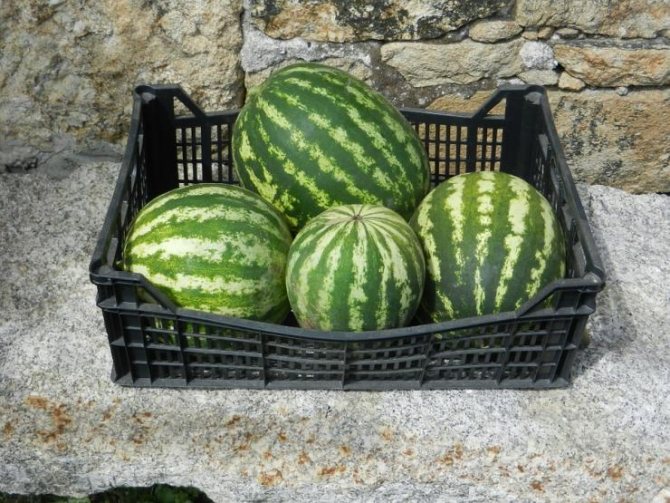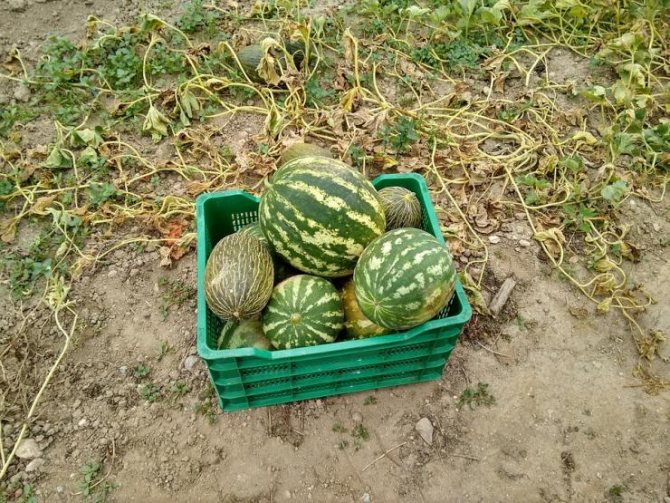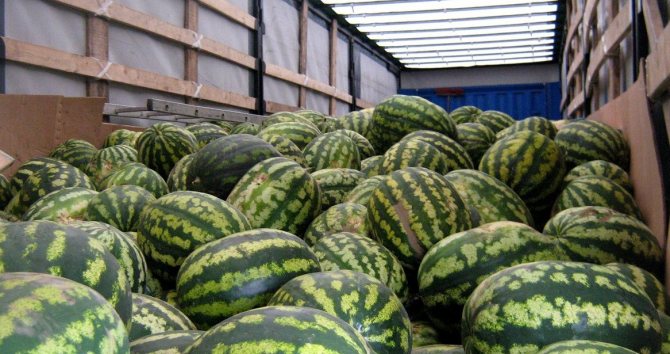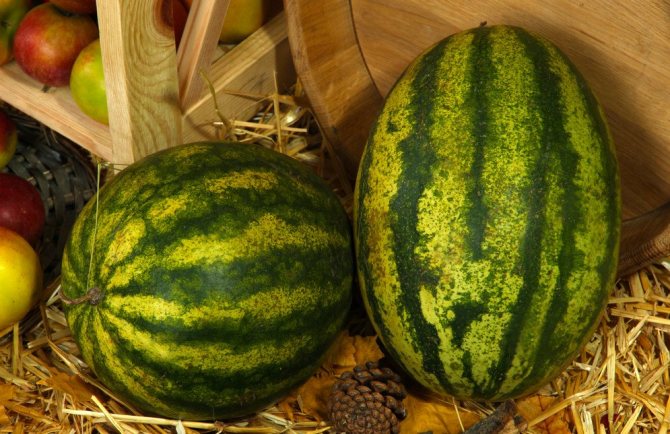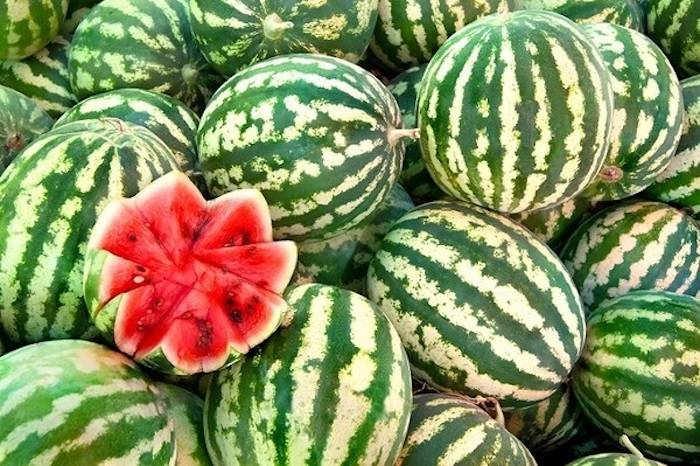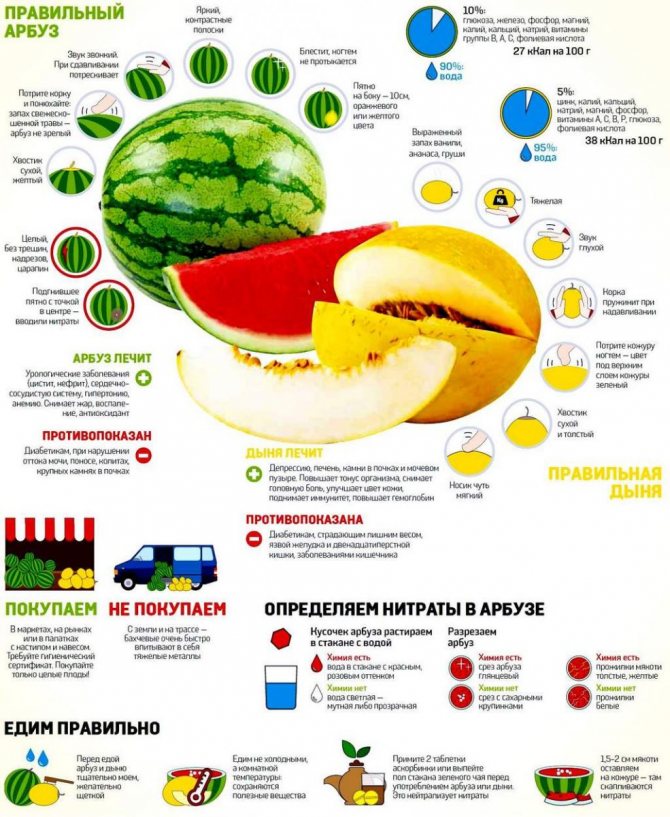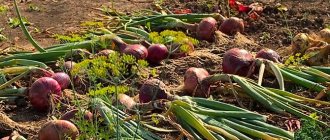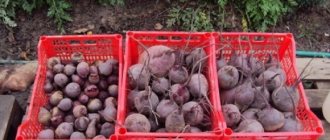South Africa is considered the birthplace of watermelon, so beloved by children and adults. There is evidence that it was cultivated in Ancient Egypt and Ancient Rome. And this melon culture was brought to us in the 13th - 14th centuries. Its pulp contains glucose and fructose, as well as a large amount of vitamins and minerals that the human body needs to cope with inflammation and colds. In addition, the use of this melon culture leads to the normalization of metabolic processes and improves immunity. Even in ancient times, sweet pulp was considered a remedy for various ailments. Many people want to preserve the harvest as long as possible in order to consume these juicy fragrant fruits not only in the short period of time allotted by nature. Today we will talk about how to store watermelon at home, in the refrigerator and in the basement. And also let's talk about how to choose them correctly.
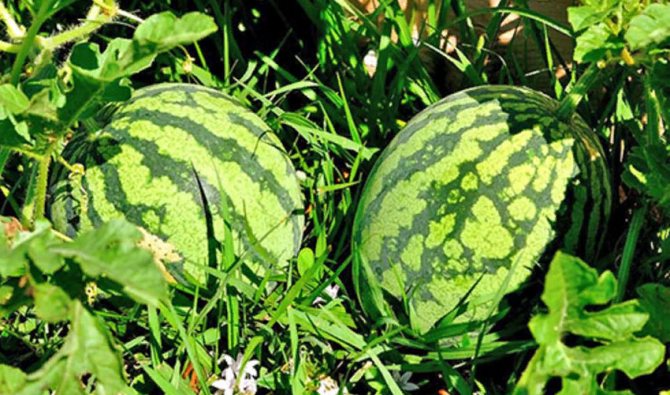
How to choose watermelons for storage
Subject to several rules, the shelf life of watermelons can be significantly extended.
- Before buying, the fruit is carefully examined. If it is damaged: cracks, scratches, dents, it is better to refuse it.
- You need to buy fruits of the correct shape, having an average size (5 - 7 kg.).
- When the watermelon is removed from the melon, it has practically no chance to ripen. Therefore, the crop is harvested when the fruits have reached full ripeness. Too overripe fruits are not stored for a long time (maximum 3 days, in the refrigerator).
In order for watermelons to survive for a long time, you need to buy them when they become absolutely ripe, paying attention to the following details.
- Ripe fruit, when tapped, reflects a dull sound. Its peduncle must be dry and attached to the same dry base. In addition, the fruit should have a yellowish part, up to 10 cm in size, which was in contact with the ground when ripe.
- It is desirable that the color of the peel is clear and contrasting. Light stripes should be clearly visible against darker ones when it comes to “striped” varieties. Blurry, unclear outlines of the pattern indicate the content of nitrates, so it is better not to buy such a fruit.
- It has been noticed that the "female" watermelon tastes better than the "male", and besides that, there are few seeds in it.
- The main difference between the "female" fruits is considered to be a wider halo (light dry round spot on the opposite side of the tail).
- If part of the pulp is placed in water and the water becomes slightly cloudy, this is an indicator of the quality of the fruit. The presence of nitrates will immediately become apparent if the water turns pink.
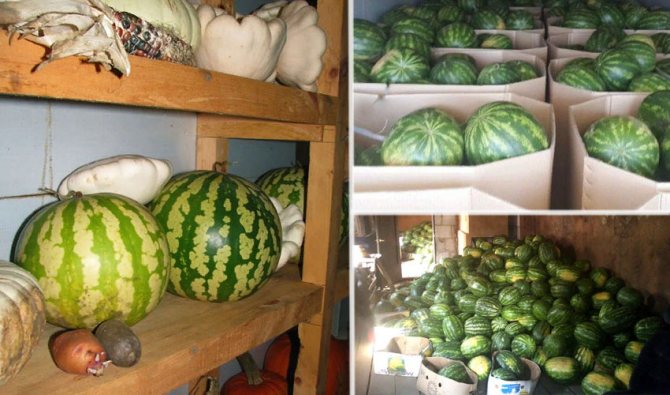

How to store a watermelon
- Storage of watermelons should take place in a dark, ventilated room, where the temperature is kept at + 2 ° С - + 8 ° С. Humidity should not exceed 85%, and be not lower than 75%.
- Once every two days, the fruits are examined and turned over. If some of them have already begun to deteriorate, they are isolated from the rest so that the entire crop does not suffer.
- The fruits quickly absorb the surrounding aromas. Therefore, they are kept separate from vegetables that have a pungent smell.
- You can store a watermelon in a city apartment, if there is no cellar, garage or basement, on a glazed loggia or in a cool pantry.
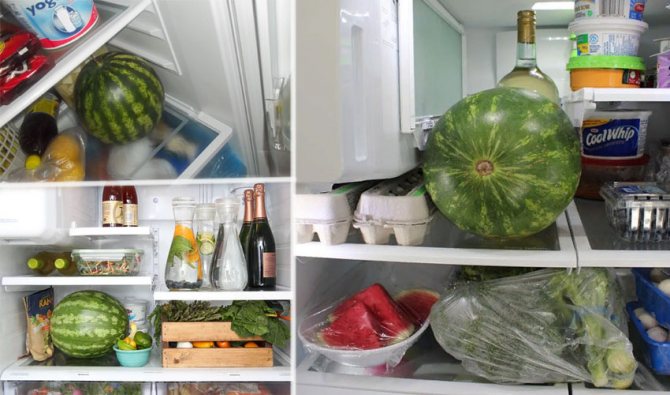

How to keep a watermelon until the New Year in an apartment and a private house
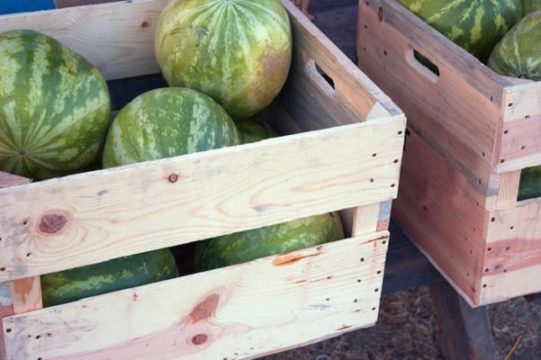

It is more difficult to keep a watermelon fresh in an apartment for several months than in a house, but it is still possible.
You can place the fruits in the pantry or on the balcony (provided that it is glazed), as well as in the bathroom or on the mezzanine.
The location chosen should meet the recommended darkening, temperature and humidity values. But most importantly, there should be enough free space so that the watermelons do not touch each other, walls, partitions, etc.
There is more space in the house that can be adapted for storing watermelons. A pantry, cellar, basement, attic, garage, unheated yard buildings, etc. are perfect.
Important! When choosing a room, remember that the temperature there should not be lower than +5 degrees.
How much watermelon is stored
The shelf life of watermelons can exceed 3 - 4 months if the conditions mentioned above are met. And if you keep them at room temperature, the shelf life will not exceed 1 - 2 months.
Damaged fruits are stored from a week to three.
Storing watermelons at room temperature
The duration of fruit conservation depends on the variety, harvest time and storage conditions.
Fruits with a dense massive peel, slightly unripe at the time of harvest, even at + 23 ° C, can retain freshness for up to 1 month. Of course, provided they are in perfect condition at the time of storage.
If the fetus is damaged or incised, its shelf life is limited to 1 - 2 days.
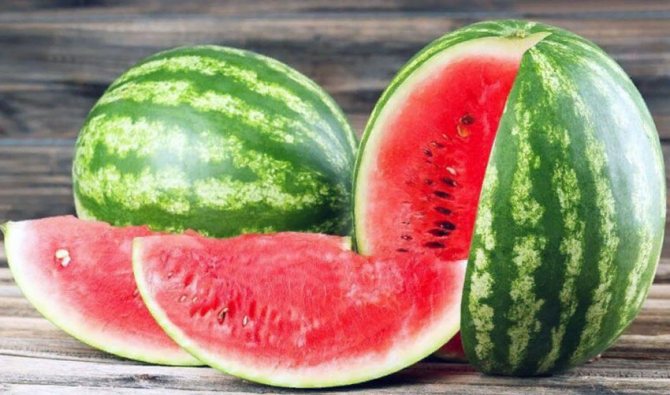

Product preparation and selection


You can save fresh watermelons until the New Year in different ways, but no matter which one you choose, you should definitely start with the correct choice of the fruit. The shelf life depends on what it will be.
For long-term storage, it is advisable to purchase a watermelon:
- weighing about 3-5 kg;
- with an even dense skin without any damage;
- late varieties;
- slightly immature.
It is interesting! Melon sellers divide the fruits into "boys" and "girls". They assure that the "ladies" are juicier and sweeter. Try it yourself. Watermelon "girl" has a round, slightly flattened shape, it has much fewer seeds.
How much and how to store a cut watermelon in the refrigerator
So that the already cut watermelon does not turn sour, it is immediately removed to the refrigerator, where it can be stored. within 3 days... Left right on the table, it will be usable for everything few hours.
To keep a watermelon cut into pieces in the refrigerator as long as possible, it should be wrapped with foil along with the dishes on which it is located. This is done in such a way that the pulp does not come into contact with the film. To do this, turn the fruit upside down and place it on a plate, and then wrap it all together with cling film.
Small slices of cut watermelon can be placed in sealed food containers, and also placed on the refrigerator shelf. In this form, you can keep the pulp for 1-2 days.
Long-term selection criteria
The key to the safety of the watermelon for the longest possible time is its initial state. Regardless of how long it will be eaten, you need to evaluate it according to two criteria:
- Inspect the peel for external defects. These include cracks, dark spots, deep scratches, dents.
- Assess the safety of melons and gourds. The shiny skin with a bright color and well-defined stripes (in the corresponding varieties) indicates that they were fed with safe organic fertilizers. A dull skin and a washed-out surface pattern are signs of a large amount of nitrate in the pulp.
If the watermelon is planned to be eaten in the near future, it is cost-effective to opt for large early and mid-season varieties.
For long-term storage, it is better to choose berries harvested in late September - early October.They are small in size, weighing on average 6 kg and have a thick rind.
In any case, the culture must be well matured. Sufficient ripeness is indicated by the following signs:
- "Ringing" when knocking on the skin and crackling when compressed.
- Dry dark tail and the same base.
- Large yellow spot on the side.
- The mesh is gray at the end opposite the peduncle.
Round watermelons are considered "females", elongated - "masculine". Round fruits are sweeter and have fewer seeds.
Freezing watermelon
The shelf life of the cut fruit can be significantly extended by freezing.
Watermelon cut into parts lends itself well to freezing due to the content of a large amount of water in it. It can be sent to the freezer in its natural form, or it can be sprinkled with sugar or syrup beforehand.
Storing the watermelon frozen can last until the next harvest.
Defrosting takes place on the refrigerator shelf. Frozen pieces must not be placed directly at room temperature for defrosting. After defrosting, the watermelon should be used within 2 to 3 days, even if it will be stored in the refrigerator.
After defrosting, the pulp tastes different from what it used to be.
Freeze the pulp, separated from the rind and seeds, and cut into small pieces.
- For this, the pulp is cut in a convenient way (slices, squares, etc.).
- Then the workpieces are laid out in one layer on a flat dish, the bottom of which is preliminarily covered with parchment paper, and placed in the freezer.
- A few hours later, when the pieces are completely frozen, they are transferred to bags in small portions and sent back to the freezer for long-term storage.
Can watermelons ripen when stored
An interesting question: do watermelons ripen after they have already been removed from the melons? In conditions of stable low temperature (+ 3 ° С - + 5 ° С), their degree of maturity will remain unchanged. But at room temperature (+ 20 ° C - + 25 ° C), the watermelon can continue to ripen, even if it was already ripe.
If unripe fruits are placed in a cool cellar, they will remain so.
For those people who know how much watermelon can be stored, even on New Year's holidays, this juicy fragrant fruit is present on the table, and gives everyone a great mood.
Watermelons are sweet and juicy berries that are traditionally sold during the summer season. Many of us have the question of how long a watermelon can store, so that it retains all its taste, and does not turn out to be sour and cottony. We will tell you exactly how to keep a watermelon longer and how much it can be stored in this article.
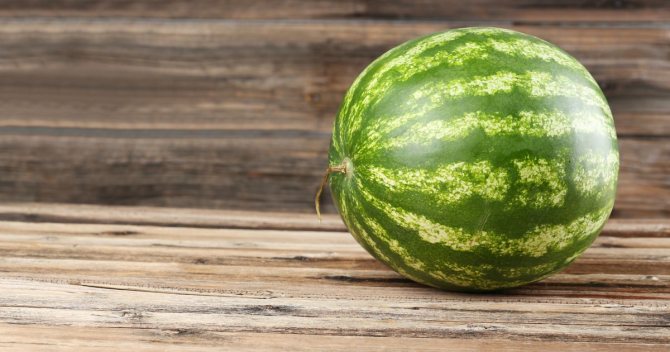

Fresh articles about garden and vegetable garden
And if there is no refrigerator?
If it is not possible to store the watermelon in the refrigerator, then you can proceed as follows. For this, a bucket or basin is fine. They put the cut berry there and close the container with a lid. In this case, it will lie even longer than in the refrigerator compartment.
It is important to remember that you should not touch the watermelon with your hands. All manipulations with it are best done with gloves. There is another way to store watermelons. It is especially relevant when it comes to the plantation where they grow. After all, it is, of course, impossible to consume a large number of striped berries at a time.
Experienced agronomists advise using sand for storing watermelons. This is especially convenient if they are stored in a cellar. In this case, a large box should be used. It is covered with sand and placed in a cellar. This method has disadvantages. The fact is that you cannot turn the watermelons over. Therefore, the shelf life of watermelon in the sand is no more than a few weeks.
How to keep a watermelon until the New Year
Useful properties of watermelon
Watermelon is 90% water and has a pleasant calorie content - 38 kcal / 100g. Its pulp contains negligible protein and practically does not contain fat.
The pulp of watermelon contains fiber, pectins, hemicellulose, vitamins B1, B2, C, PP, folic acid, provitamin A, carotene, manganese, nickel, iron, magnesium and potassium, from 5-11% digestible sugars, as well as a little ascorbic acid, carotene, very little thiamine, riboflavin and niacin.
Watermelon pulp is also rich in organic acids that stimulate digestive and metabolic processes well.
In addition to concentrated pulp components, watermelon seeds also contain carotenoids, tocopherols, B vitamins (thiamine, riboflavin, nicotinic acid, folic acid), a wide range of macro- and microelements, incl. zinc and selenium; and polyunsaturated fatty acids. The oil contained in the seeds is rich in vitamin D.
Due to its juicy pulp, watermelon has a diuretic property, it is recommended to eat it for edema caused by diseases of the cardiovascular system and kidney disease, incl. presence of stones.
Nutritionists believe that you can consume 2-2.5 kg of watermelon per day. For example, in case of kidney stone disease (urate and calcium oxalate stones in the kidneys and in the bladder), these salts precipitate during the acidic reaction of urine, while watermelon promotes their transition into a more soluble state, and its diuretic effect accelerates the excretion of salts from the body. In this case, nutritionists advise to eat watermelon evenly, in portions, even at night. There is no better food for patients with sclerosis, gout, hypertension, arthritis, diabetes than watermelon.
The fiber of watermelon has a tonic effect, stimulates intestinal peristalsis, and helps to eliminate excess cholesterol from the body.
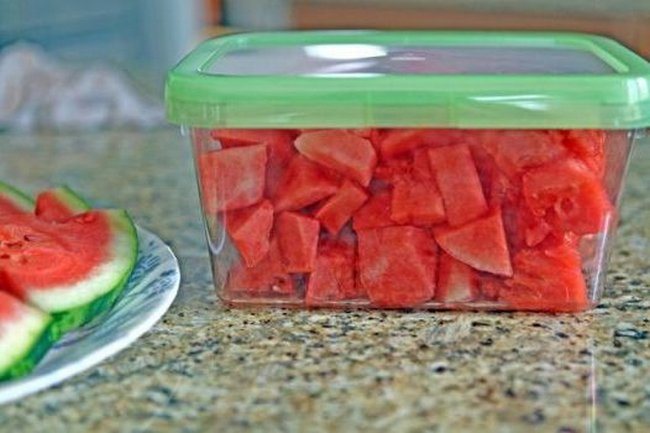

Dangerous properties of watermelon
Without a doubt, ripe and sweet watermelon will be useful to almost everyone, but in large quantities it is contraindicated for those who have diabetes mellitus, those who are at any stage of nephrolithiasis, as well as with severe pathologies of the pancreas or prostate gland. You should not use watermelon with pickles, because due to salt, fluid is retained in the body, and this in turn leads to edema.
Like all melons, watermelon tends to accumulate various nitrates such as phosphorus, potassium and others, which are used as fertilizers. Try to make sure before buying that they were not used during cultivation. Nitrate watermelons can cause severe poisoning, they are especially dangerous for children. If you cannot check the purity of the purchased product, then remember that all the benefits of watermelon are concentrated closer to the middle, and harmful substances are concentrated around the peel.
Fresh articles about garden and vegetable garden
Choosing a watermelon for long-term storage
When buying berries, you should pay attention to the variety, appearance and size of the berry.
Variety. Can be stored in the winter at home watermelons of the following varieties: "Popovka"; "Astrakhan striped"; Volzhsky; "Dessert"; "Astrakhan marble"; Bykovsky; Melitopolsky; "Icarus"; "Kholodov's Gift". Watermelons ripening later than others have a thick skin that protects the inside of the flesh from damage. You need to buy them at the very end of the season: from mid-September to early October. If you plan to lay berries in the storage from your own personal plot, you need to collect them several days before they fully ripen.
A watermelon grown independently by a gardener is the best option for storage. If a purchased fruit is used for this purpose, it is worth following a number of recommendations when choosing:
It is advisable to buy one fruit for testing. This will allow for a more thorough check:
- If the pulp shows yellow tints, it means that chemicals were used in the cultivation;
- The pulp should become cloudy on contact with water. If it turns bright red, then there are nitrates;
- Do not store very crumbly pulp until the holidays;
- If there are cracks, spots of white or brown color on the peel, then you should not buy a watermelon. The peel must be whole, otherwise it will not be possible to preserve the fruit;
- It is worth choosing a berry with a dry tail or a stalk and a shiny skin;
- Don't pick large watermelons as they will rot faster. The mass should be no more than 5 kg;
- It is important to buy ripe fruits. If the berry is unripe, it will remain green. An overripe watermelon will soon deteriorate;
- Harvesting of berries should take place in dry weather, as high humidity increases the likelihood of rotting;
- Late varieties are used for bookmarking, so it is advisable to start harvesting in early autumn.
Important: Choosing a batch of fruits for storage for the winter is a laborious and responsible process. Therefore, at first it is worth buying 5-6 fruits, there is no point in acquiring a large batch at once.
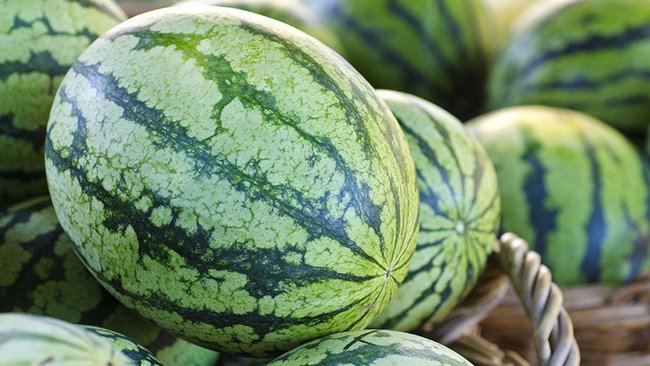

How to store a whole watermelon
You can store watermelons at home for a long time, it is important to choose the right fruits and observe some conditions. Let's take a closer look at how to make the right choice:
- only late varieties of thick-skinned watermelons are suitable for long-term storage. The fruits of seedless varieties will be stored for the longest;
- Inspect watermelons carefully before purchasing. The fruits must have a whole skin, without dents, scratches, cracks and other defects;
- give preference to strong round-shaped and medium-sized watermelons (5-7 kg);
- the presence of nitrates is indicated by the matte surface of the fruit and blurred, indistinct stripes (in striped varieties);
- make sure that during storage the watermelons do not come into contact with each other;
- store watermelons only on a soft surface. Use straw, sawdust or natural soft cloth; to store watermelons for a long time, you need to provide optimal conditions - no light, good ventilation, temperatures from +2 to +8 ℃ and relative humidity of 75-85%;
- during storage, regularly inspect and turn the watermelons on the other side. This procedure is best done every 2 days. So you will notice spoiled fruits in time and save the rest of the crop;
- watermelons absorb odors well. If possible, store them separately from other vegetables and fruits, especially potatoes.


Helpful hints
To ensure the complete safety of the product for 3-4 months, experts recommend:
- do not store unripe fruits in the hope that time and a slight chill in the room will allow the watermelon to ripen successfully;
- during storage, watermelon berries should under no circumstances come into contact with each other or with other vegetables or fruits;
- do not lay fruits on a hard surface;
- periodic turning of the fruits is required, combined with a check of their integrity;
- there is no need to wrap the fruits in the pages of glossy magazines, since the substances contained in the printing ink pass into the watermelon and have a detrimental effect on human health.
In order for a fresh watermelon, which in its condition is no different from a summer-autumn product, to cease to be exotic on the New Year's table, it is not necessary to make excessive efforts. And the result justifies all these efforts with interest.
Methods for storing watermelons
There are many ways to store fruit. We suggest that you familiarize yourself with the most common ones.
If you decide to choose this method, first you need to go to the forest to collect moss. It must be dry. It is necessary to cover the bottom of a wooden box or box with moss, put berries on it and cover them with moss on all sides. A box with a watermelon should be stored in a cellar or basement, the recommended air temperature is + 2-3 ° C.
With this method, the fruits can be stored in a private house and apartment. First you need to wrap the berry in a dense natural fabric, then place it in a string bag and hang it on a hook.The watermelon should not touch any surfaces, that is, it should be completely suspended.


This method is often used by people who use wood to heat the stove. Alternatively, you can purchase it from specialized stores. Ash prevents fungi and putrefactive bacteria from developing, absorbs excess moisture. Sifted ash is poured at the bottom of the wooden box, then the berries are spread on it and the top is completely sprinkled with ashes. Cover the box or box with a lid and leave it in the cellar.
Straw is great for long-term storage. The bottom of a box or box should be sent with a fairly dense layer of straw. Then berries are laid out on it in such a way that there is a distance between them, and the stalks look up. Straw is also laid out between the watermelons, and it is placed on top. It should completely cover the berries.
It is necessary to melt the wax or paraffin and cover the watermelon with it. The layer should be thick, about 1 cm. In this form, the berries are stored in a cool place, for example, in a basement or cellar.
How to maximize shelf life
For the winter, watermelons are usually canned. But, using some techniques, you can extend the shelf life of fresh fruit until the New Year.
Laying in a vegetable pit
It is produced in the following sequence:
- The earth is dug to a depth of 50-70 cm.
- The bottom of the resulting pit is covered with well-dried straw.
- The fruits are laid in a row with the stalk down and completely covered with straw.
- Pour the earth with a layer of about 30 cm.
Ash storage
A thick layer of ash is poured into a wooden box, watermelons are placed on it with their tail down so that they do not touch each other with their sides. Cover the top with a second layer of ash. Instead of ash, dry grain or sand is also used.
Clay coating (wax, paraffin)
Clay is diluted with water to a state of thick sour cream and gently coat the surface of the watermelon with it. When the clay crust is completely dry, the fruit is placed in a cellar or pantry on a soft bedding.
In the same way, the peel is covered with melted wax or paraffin. The rind seals the pores of the fruit and prevents it from coming into contact with air. As a result, the likelihood of rotting is minimized.
Is it possible to keep a watermelon in the apartment until the New Year holidays? Yes, but only in the refrigerator. For this, the compartment intended for vegetables is lined with soft linen or cotton cloth in several layers. The fruit is washed with a soda solution, dried, and then wrapped in several layers of newspaper and placed on a soft bedding. The watermelon is turned over every 2-3 days. In addition, the newspaper should be removed once a week and the freshness of the product should be checked.
Suburban conditions for storing watermelon
It is much easier for owners of a summer cottage and a house to choose their own storage option, since the range of possibilities is significantly expanded.
Experienced melon growers believe that it is possible to safely store right on the site for the whole winter, placing the fruits in a deep hole covered with a ten-centimeter layer of straw or shavings. The peel is covered with a solution of lime (25%), sandwiched with shavings and covered with a thirty-centimeter layer of earth. The only drawback is that it will not work to trace how such storage proceeds.
Another interesting option that allows you to make stocks of striped berries for the winter, store them in water. To do this, barrels, tubs, cisterns or other containers are poured with cool water and the watermelons are laid out so that they are completely covered with liquid. The water must not be allowed to freeze; moreover, it must be changed about 2-3 times a month. In this way, the fruits are well stored for about three months.


How to store a whole watermelon
You can store watermelons at home for a long time, it is important to choose the right fruits and observe some conditions. Let's take a closer look at how to make the right choice:
- only late varieties of thick-skinned watermelons are suitable for long-term storage. The fruits of seedless varieties will be stored for the longest;
- Inspect watermelons carefully before purchasing. The fruits must have a whole skin, without dents, scratches, cracks and other defects;
- give preference to strong round-shaped and medium-sized watermelons (5-7 kg);
- the presence of nitrates is indicated by the matte surface of the fruit and blurred, indistinct stripes (in striped varieties);
- make sure that during storage the watermelons do not come into contact with each other;
- store watermelons only on a soft surface. Use straw, sawdust or natural soft cloth;
- to store watermelons for a long time, you need to provide optimal conditions - no light, good ventilation, temperatures from +2 to +8 ℃ and relative humidity of 75-85%;
- during storage, regularly inspect and turn the watermelons on the other side. This procedure is best done every 2 days. So you will notice spoiled fruits in time and save the rest of the crop;
- watermelons absorb odors well. If possible, store them separately from other vegetables and fruits, especially potatoes.
Optimal conditions for long-term storage in an apartment
At what temperature, humidity and degree of light in the room can you store a watermelon in an apartment? Under normal conditions, a watermelon in a living room will not last long. However, if no one lives in the apartment, you can create optimal conditions there:
- the temperature should vary from +1 to + 4 ° С and definitely should not exceed + 10 ° С;
- optimal humidity - about 80%;
- the room must be protected from sunlight, which negatively affects the storage of the berry.
Despite the fact that the peel of the late-ripening fruit is very thick, it is recommended to lay it on a small layer of paper or cotton cloth.
Common mistakes and useful tips
So that the melon culture does not deteriorate in 1-2 weeks, it is important to avoid storage errors:
- do not store on an insulated balcony;
- do not store together with fresh vegetables, fruits and other products;
- keep the watermelon completely wrapped in cloth, paper, or towel.
With any storage method, it is necessary to regularly inspect the fruit for damage, drying or decay.
reference... If you decide to wash the watermelon first, you must dry it completely and only then send it for long-term storage.
How to store a cut watermelon
It's no secret that peeled fruits and vegetables have a very short shelf life. How long can you store a cut watermelon so that it does not turn sour?
If the watermelon is not completely eaten, it must be placed in the refrigerator and stored for no more than 2-3 days, since bacteria very quickly appear and multiply on the pulp, which can lead to poisoning. Do not leave the cut watermelon at room temperature for more than 1 hour.
To determine the presence of nitrates in a watermelon, just place a piece of pulp in water. If the water becomes slightly cloudy - the watermelon is of high quality, if it acquires a pinkish tint - it means that the fruit was grown using chemicals.
For storage in the refrigerator, the cut watermelon is wrapped with cling film along with a plate or bowl. It is undesirable for the pulp to come into contact with the film, so the fruit should be cut down. Watermelon pieces are also placed in lidded containers (pots, bowls, or plastic containers) and refrigerated.
To extend the shelf life of a cut watermelon, you can freeze it. The pieces are frozen fresh or sprinkled with sugar, fructose, poured with syrup or juice to taste. The shelf life of frozen watermelon is 8-12 months. Defrost the watermelon in the refrigerator and use the thawed product for 2-3 days.
For freezing, the fruits are thoroughly washed, peeled and pitted and cut into pieces. It is important to handle the watermelon with clean hands to avoid bacteria. The pieces are laid out at some distance from each other on a tray lined with parchment and frozen for several hours.Then they are transferred into bags, wrapped and put into the freezer for storage. To taste, before or after the initial freezing, you can sprinkle the pieces with sugar in the proportion: 200 g of sugar per 1 kg of watermelon.
Frozen watermelon changes the consistency of the pulp, so it is better to use this product for making desserts, drinks and cocktails.
If you wish, you can pour sugar syrup over the pieces of watermelon. The sweetness of the syrup depends on taste preferences, most often the following proportions are used: 3/4 cup sugar per 1 liter of water. Pieces are laid out in a container with a lid and completely filled with cooled syrup. You can use pineapple or orange juice instead of syrup. It is important to fill the container no more than 85% full to allow free space for the growing frozen liquid.
For long-term storage, watermelons can be salted, fermented and pickled. Store them under the same conditions as other preservation.
Following our recommendations, you can keep the freshness and juiciness of watermelons not only until the New Year holidays, but also until spring. Share your experiences, stories and storage recipes in the comments.
How much and at what temperature to store watermelon
The optimum storage temperature for watermelon is from +1 to +3 degrees. Under such conditions, the fruit is able to maintain freshness for 3-4 months without disturbing its taste.
A cut watermelon cannot be stored at room temperature.... In such conditions, it can be kept for 2-3 hours (if the weather is sunny or warm season, then the pulp may begin to deteriorate within an hour). This nuance plays a special role. The fact is that stale watermelon can be poisoned. Bacteria that rapidly appear and multiply on juicy pulp are dangerous to health. These processes are accelerated due to the influence of heat. The cut watermelon should be stored at a temperature of -10 degrees.
It is recommended to store the cut watermelon in the refrigerator for no more than a day. During this time, the flavoring properties of the pulp are preserved, and the risk of the appearance of harmful bacteria is eliminated. Changes become noticeable on the second day. The watermelon becomes less intense in taste and aroma, but still fit for consumption. After 2-3 days of storing it in the refrigerator, you should refuse to use it due to the loss of taste and the beginning of the oxidation process.
The maximum storage temperature for watermelon is +6 degrees. At higher temperatures, the fruit will start to deteriorate faster. In addition, a prerequisite for storage is considered to ensure sufficient air humidity. There is a lot of liquid in watermelon, therefore, the more humidified the air is, the longer the shelf life of the striped fruit will be.
Watermelon pulp can be frozen... It will have to be eaten within a few months. When defrosting, its consistency will change, so these watermelons are more suitable for making desserts or drinks.
Juicy pulp of aromatic sweet watermelon pleasantly refreshes in heat and quenches thirst. Watermelon is a source of iron, potassium, magnesium, folate, vitamin C, and fiber. Its use allows you to improve your body and lose weight. You want to enjoy delicious watermelon not only in season. In this article, we will talk about how to choose and how to store a watermelon correctly, how much watermelon can be stored in the refrigerator, and also answer other important questions.


